When you think of antique victorian fans, your first thought may be old-fashioned folding fans, adorned with ribbons and feathers and fluttering across every ballroom available. But that’s not the only kind of fan that was available.
With the increased access to electricity, we saw more everyday electronics entering the household. One such item is the electric fan. Whether antique ceiling fans or the desk variety, fans have kept people cool for decades.
Navigating the world of antique fans, however, can be daunting. It takes a little bit of knowledge to know what fans are a good value worth collecting and which ones would be more valuable at the town dump.
Today, we are offering a primer of knowledge on the world of antique fans, letting you know where to find antique electric fans, most valuable antique fans, and antique floor fans.
For the sake of clarity, this article will focus on desk and floor fans. If you are looking for antique reproduction ceiling fans, old-fashioned ceiling fans with lights, Victorian antique ceiling fans, or antique wall-mounted fans, then you may not find the fan you are looking for.
However, there is still plenty of information within the fan universe here that you may find useful.
Table of Contents
A Brief History of Fans
The first electric fans started to make their way into homes in the 1900s. At this point, household electricity was only beginning to be expected, leading to a burst of new electronics to make the daily lives of everyone just a little bit easier.
As many products were at that time, these early electric fans were made of sturdy materials that could stand the test of time. You can expect to see materials such as cast iron, steel, brass, and copper in antique fans.
With that kind of manufacturing, it is little wonder that there are so many still in circulation today.
The earliest fans were straightforward in design. Most were just plain black, as was very fitting to Victorian fashion. As you would expect, as the years churned, the styles of these fans changed with them.
By the 1930s, electric fans could be spotted in the art deco style, lavish with gold details and plenty of different colors. After the art deco period, more colors began to appear so that everyone could match their fan to their home decor.
There were a few brand names that circulated with these early fans. These popular manufacturers included Emerson, General Electric, Robbins & Myers, and Westinghouse. These will be the names you will want to watch for when searching online or in flea markets for an antique fan.
A Brief Note on Safety
If you’re the type of person who likes to use their antiques rather than letting them sit on a dusty shelf, we have a couple of notes of caution before using your electric fan.
One, and perhaps the most crucial point, is that you must replace the wiring if you intend to use your fan. Have a certified electrician do this for you. Not doing so could lead to an electrical fire or, at the very least, damage your antique.
It is almost essential to note that antique fans often had grills far more open than the ones you find today. It would be very easy for a stray finger to get caught between the blades. Always keep your operating fan away from children or pets who the blades may injure.
Antique Fans Price Guide
Like most antiques, there is no set price for the entire range of products. Rather, the antique fan’s value will depend on the antique’s condition, if it has all its original parts, the brand name, the rarity, the materials, and the age.
You could probably find common electric fans for about five dollars at a flea market or even a garage sale on the low end. At the high end, you could expect to spend upwards of $800.
One of the leading deciding factors in the price of antiques is age. The older the fan, the higher the price, if all other factors were equal. Don’t be too surprised if you spend more for a broken fan from the 1900s than you would for an art deco fan in pristine condition from the 1930s.
Condition is the next leading deciding factor in the price. If you have two fans from the 1900s, the one that is the most intact will fetch the higher price. That is not to say that a completely non-working one is junk. You could probably still sell an old broken fan to someone who enjoys repairing antiques for a pretty penny.
When looking at fans at a higher price point, it may be worth your time and wallet to get the fan appraised by an antique dealer. They would be able to tell you with more certainty a fair market value, decreasing your risk of getting ripped off.
How to Care for an Antique Fan
If you find yourself with an antique fan in your hands, you will want to know how to care for it. Again, if you plan on plugging it in, please have a certified electrician change out the wiring first.
Thanks to the study materials used to make antique fans, they are usually easy to maintain. They will just need a good dusting on the outside in most cases. The inner mechanisms may need a little grease as well to get going.
Popular Fan Varieties
Now that we have covered a little about what to look for in antique-looking floor fans and a little about their history, it is time to take a look at the fans themselves. We have selected ten fans that you may spot on your next trip to the antique show, spanning several sizes, brands, and timelines.
Emerson Silver Swan
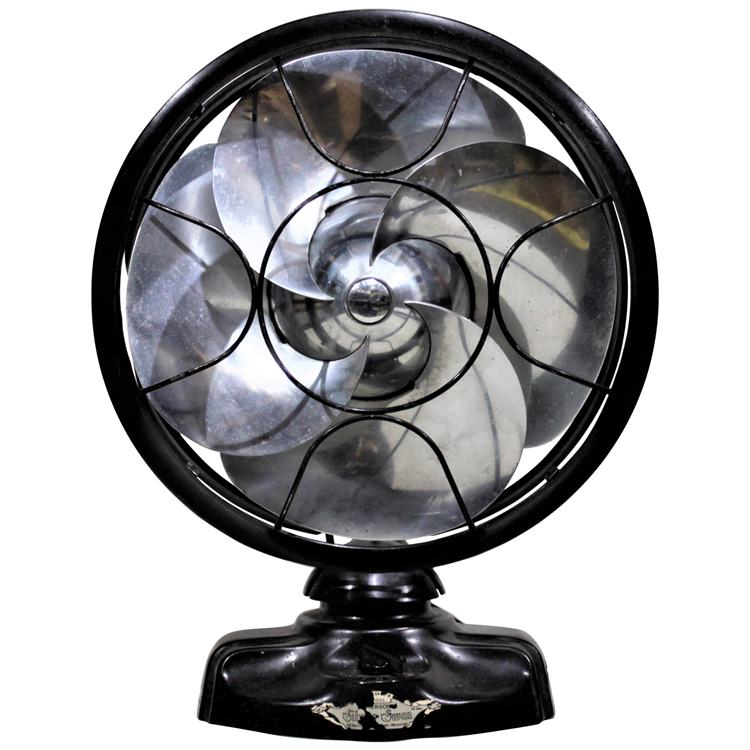
The Silver Swan is a fantastic example of an art deco design with its sleek silver fins. These antique Emerson fans were first released in 1932 and took inspiration for their design from yacht propellers. Like everything art deco, this gave the simple fan an elegant flair that made it very popular.
This fan was made of aluminum and was available in several colors, including chrome, nickel, ivory, dark brown, and forest green.
In the collecting market, Silver Swans are very popular. It might be the sleek design or the robust build, but an antique Emerson fan’s value has collected up to $1000 at auction.
Emerson Junior
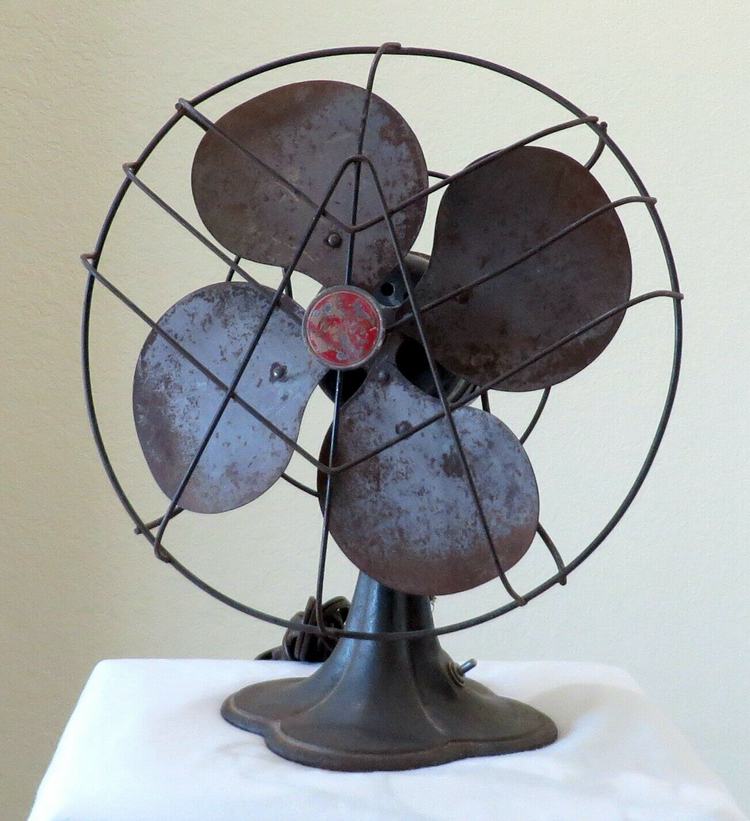
The Junior is a compact, low-cost fan built as an alternative to Emerson’s 12-inch and 16-inch fans. They were usually 8 inches and made in such a way as to keep the cost as low as possible. Despite this, they didn’t lack style. The Junior still came in many fun colors, such as mint and gold.
While the ones built in the 1900s were your basic type, it was possible to find Juniors with a selection of speeds and even oscillation as the years progressed.
The low cost of these fans has translated to the auction house. Despite being very old in some cases, the best price you might expect from a Junior is $50 at the high end. They are still lovely-looking fans, and their small size makes a good addition to a desk or bookshelf.
Emerson Northwind

These powerful fans were first made in 1916. They didn’t come in a range of colors like others on this list, but they usually came with various functions. You could get these fans as either oscillating or not, and you could get ones with multiple speeds or just one.
The Northwind was very popular for its wide functionality, leaving plenty still in circulation today. For that reason, they are not the rarest of fans and can be fairly inexpensive to pick up at auction. At the high end, you can expect to pay $100 for Northwind, though it’s not uncommon to find one for much less.
Emerson Seabreeze
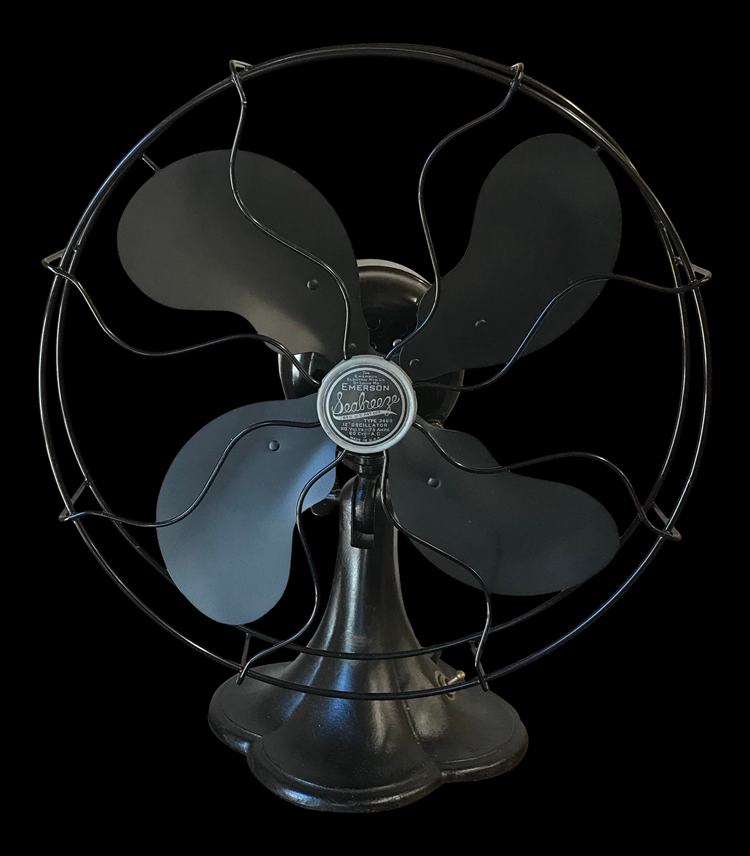
Finishing off the selection of Emersons, we have the Seabreeze. The Seabreeze started as a stationary desk fan and later came in oscillating floor fans.
Like the Northwind, the Seabreeze was a popular model for its time, but that did affect the rarity of antiquing today. While Seabreeze fans may carry an estimate of up to $400, it can be difficult to fetch a price at an auction above $100. Despite their past popularity, they are not a favorite among collectors today.
General Electric Whiz
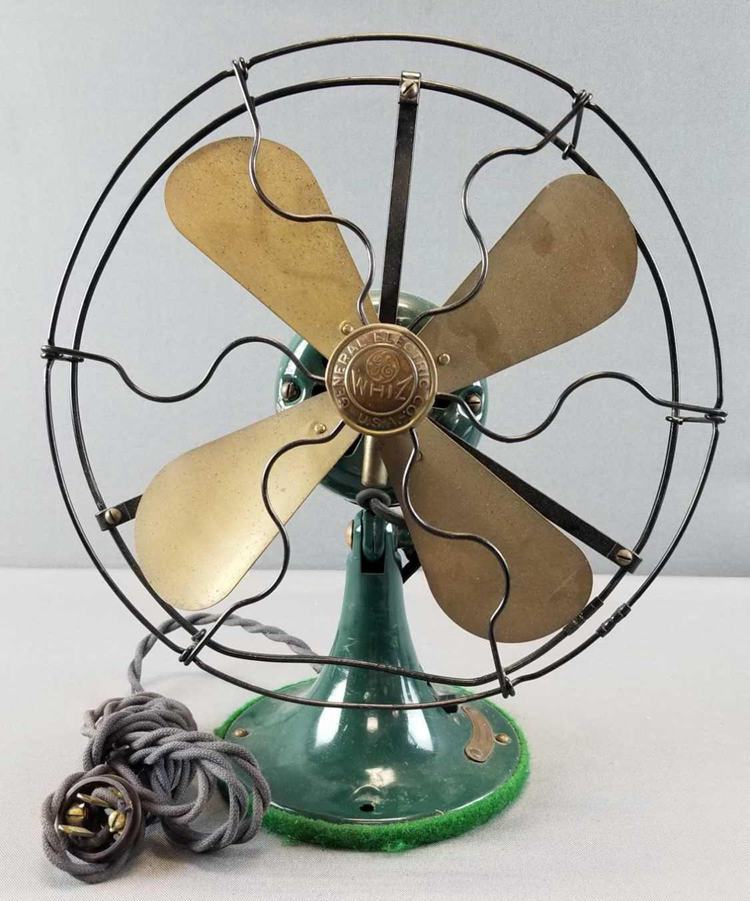
The Whiz was a ten-inch fan from General Electric that had a tilting head to help position the fan in the best possible way for you. Many of these fans came with brass blades and a black-painted base. You can find the General Electric logo at the center of the fan housing.
The original model of these fans can be quite rare and hold up over time. Thanks to the care put into manufacturing, it is possible to find these fans with almost no damage despite their advanced age.
At an auction, you might expect to see the Whiz listed for $1000 at the high end.
General Electric Bullet Nose
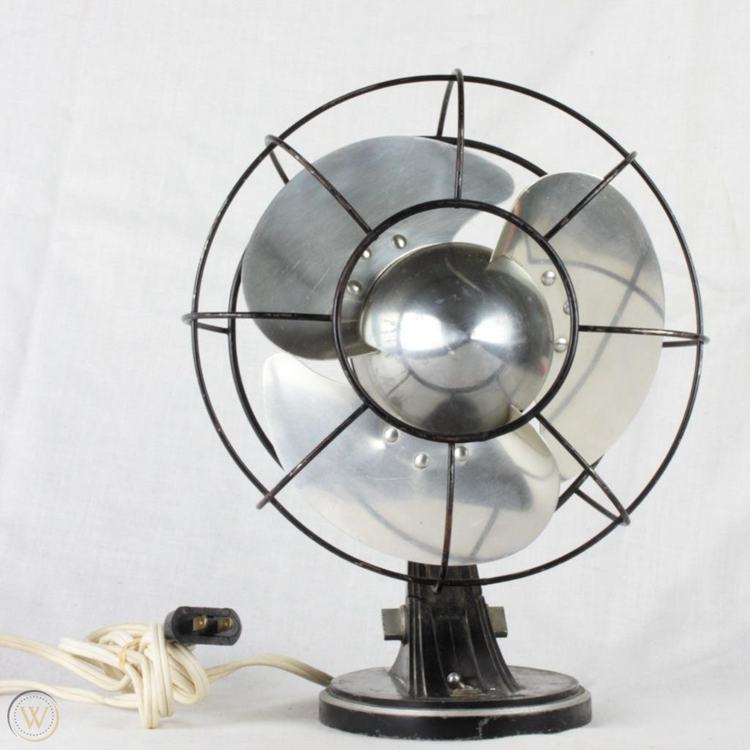
For a sleek and cool example of 30’s style, look no further than the Bullet Nose. This fan was so named thanks to the pointed nose at the center of the blades, giving the fan an almost propeller-like appearance. The blades were often silver with black housing.
For this model, the GE insignia was moved to the back to make way for the stylistic nose. It lacks the functions we’ve seen in other fans on this list, though it makes up for it in style. You can expect to find this fan for about $400.
Westinghouse Tank
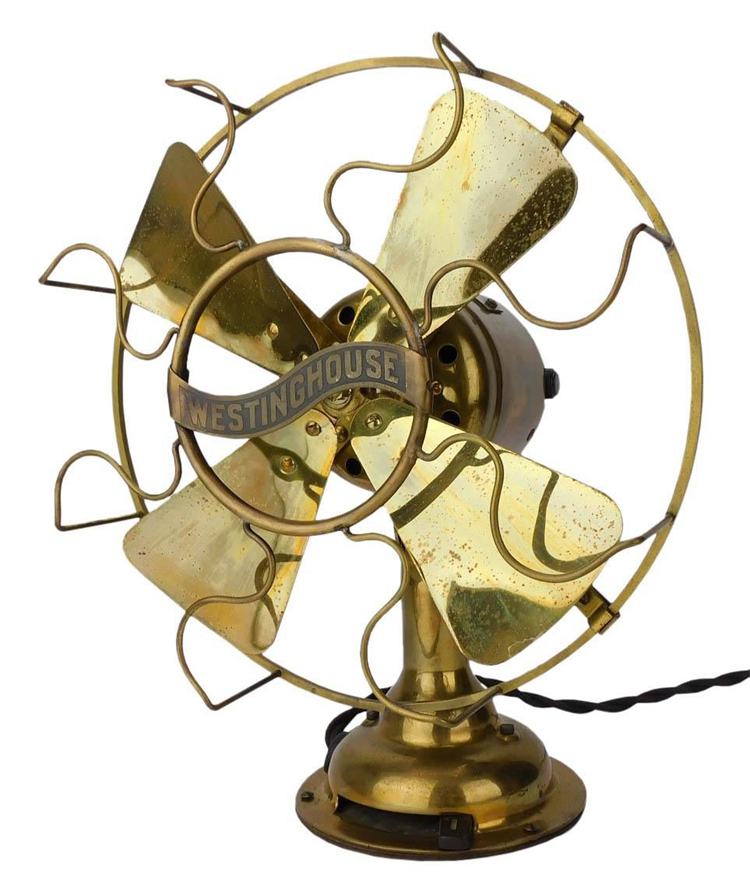
This brass fan from the 1900s was built to be a powerhouse. It featured brass blades and a matching brass cage, all on a black base. Given the name, this fan was really able to push out air while remaining small enough to sit on a desk.
The Tank is considered a bit rare, thanks to its age. It is made with sturdy construction that allows collectors to find one today with minimal wear and tear. Most collectors just need to give it a clean and replace the cord, and it is good to go. All that being said, this fan can be found for about $600.
Westinghouse Tesla
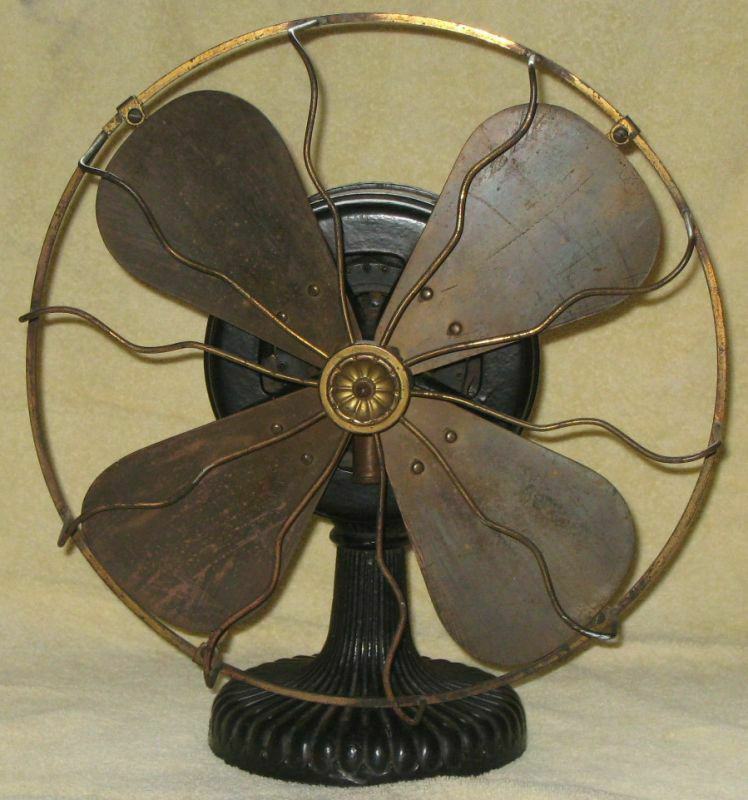
Despite the epic battle between Westinghouse and Tesla regarding which type of electric current would be best for home use, Westinghouse named one of their fans after the famous rival. The Tesla has a unique four-blade appearance that fits the vintage style perfectly.
Due to the age of this fan, you can expect to find it for about $400 at auction. Perhaps the feud between Westinghouse and Tesla contributed to the high price.
Robbins & Myers Electric Desk Fan
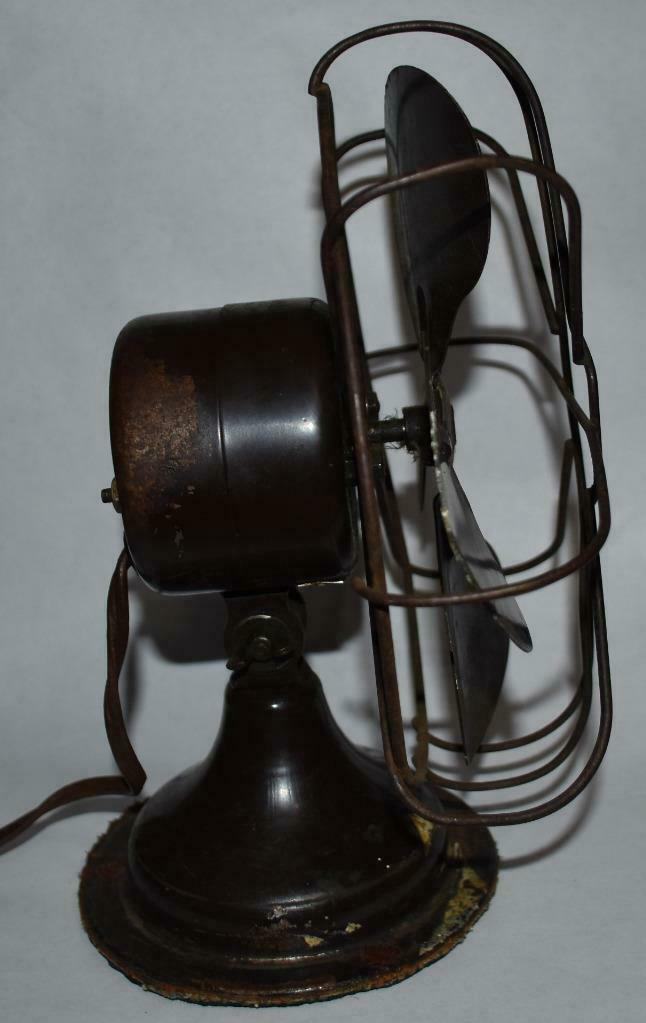
This compact fan carried the dark colors of the Victorian era at a small 8-inch size. It was built to be placed on a desk but still had plenty of capacity to push the air.
This vintage fan didn’t have anything in the way of controls. If you wanted to turn it on, then you plugged it in. If you wanted it off, you unplugged it. It was made of solid steel material and weighed about three pounds.
Given the small size of this fan and its lack of functions, it wasn’t the most popular fan and remains not very popular with collectors. You could find this fan for as little as $20.
Robbins & Myers 5204
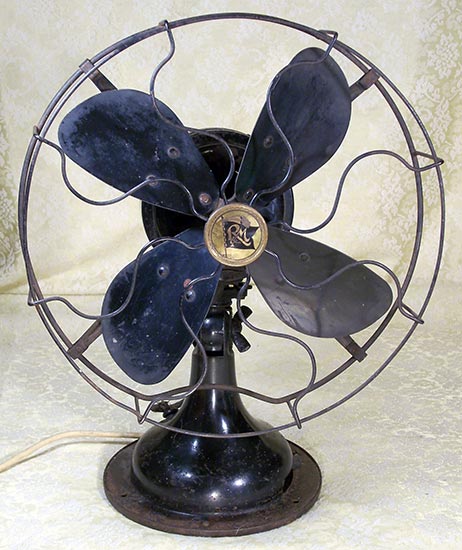
Finishing our list is this fan from Robbins & Myers. With a slight update from the previous incarnation, it offers a variety of functions and speeds. This desk fan is capable of three separate speeds and the option to oscillate. It carries a substantial 13-inch diameter that will really create a breeze.
The base of this fan was often black and made of cast iron, so it is little wonder it has stood the test of time. Like the other Robbins & and Myers fans, it is not the rarest or most desirable of vintage fans, meaning you can pick it up for as little as $40.
Final Thoughts
By now, you should have all you need to begin your venture into antique electric fans. Remember; do your research, proceed with caution, and enjoy the process. Happy hunting!






![Vintage Schwinn Bikes: [Types, Identification, and Values]](https://www.txantiquemall.com/wp-content/uploads/2022/05/5.-Schwinn-1967-Ramshorn-Fastback-Stingray-Sky-Blue-vtg-600x450.jpg)
